Discovering Shochu: Episode 10 – The Different Flavors and Ways to Enjoy Shochu
How would you respond to this question: “How can two Imo Shochu with the same alcohol content taste so vastly different?” Let’s investigate two key variables that influence how these differences may occur: Koji types and their distillation methods.
KOJI TYPES
Koji can play a major role in determining the flavor of the final product. Shochu uses one of three Koji types: yellow, black, or white. In the beginning, Shochu used yellow koji as was the case of sake, however, black koji grew more popular due to its decay-fighting ability. Awamori, brewed in the hot tropics of Okinawa, uses black koji exclusively. And recently, the trend has shifted towards using white koji for its saccharification ability that performs exceptionally well for brewing Honkaku Shochu.
[Did you know?]
White koji is a mutated version of Black koji.
1) Shochu Characteristics by Koji Types
Texture
Yellow Koji: light and smooth
Black Koji: robust and full
White Koji: rounded and mild
Aroma
Yellow Koji: fruity and citrusy
Black Koji: unique & complex
White Koji: muted and gentle
Flavor
Yellow Koji: refreshing and clear
Black Koji: full bodied and rich
White Koji: soft and rounded
2) Shochu Characteristics by Distillation Methods
Shochu is brewed in a similar way as sake, on up until the distillation step. Thereafter, it is distilled in one of two methods: Atmospheric distillation & vacuum distillation. Usually, either one method is used but some breweries employ both procedures to create their own unique fragrance and taste.
Atmospheric Distillation (Jyo-Atsu):
This is the traditional single distillation method, where brewed sake is heated to 176-194 degrees F (boiling point of water is 212 degrees F), and as the evaporating alcohol cools down, collects through condensation. This method brings out aromas to full bloom and flavors to develop its complex profile highlighting the base ingredient. Jyo-Atsu is also suited for making aged shochu.
Decompression Distillation (Gen-Atsu):
In this method, Shochu is heated in a vacuumed chamber at a low 104-140 degrees F. The suction removes any unpleasant fusel oils that remain and didn’t convert to alcohol, while generating a refreshing and gorgeous aroma.
Popular Ways of Enjoying Shochu
- Straight Up
For full enjoyment of the base ingredient, it’s best to serve straight up. For full-bodied and complex flavored sweet potato and rice shochu, serve straight up at room temperature. For a refreshingly sweet, light and fruity drink, try barley and rice shochu, at cooler temperatures, straight up. Chill more for genshu type.
- On the Rocks
This is the best way to enjoy sugarcane, Thai rice, and barrel aged shochu. The added enjoyment is the subtle changes in flavors as the ice slowly melts and blends with the shochu. Hint: Make ice using fresh spring water or once boiled water. Always place ice in a glass first, and then pour shochu over the ice.
- With Water (Mizuwari)
By adding water, Shochu alcohol strength can be adjusted according to taste preference, the food it’s being paired with, and the physical condition of the drinker. Adding water suits Shochu with strong aroma, rich flavor and high alcohol content. Ice is optional. NOTE: Use soft water with fewer minerals. For the best result, blend shochu and water in a ceramic jug overnight to up to 3 days, which results in a mellowed flavor as the separated water and alcohol molecules meld together. This process called mae-wari, is a commonplace at Shochu bars in Japan,
Mizuwari Alcohol Content Guide(for 25% Alcohol Shochu)
Shochu 7 parts : water 3 17.5%
Shochu 6 parts : water 4 15.0%
Shochu 5 parts : water 5 12.5%
Shochu 4 parts : water 6 10.0%
- With Hot Water (Oyuwari)
Mixing with hot water is best to highlight the fragrance and flavor aspect of shochu, and is especially suited for the fully-rich and sweet tasting sweet potato shochu. With addition of heated water, aroma rises fully as it blends well with the flavor. NOTE: Pour hot water into cup to cool the temperature down to an ideal 158 degrees F, and then add shochu. If this process is reversed where hot water is poured over shochu, the flavor will be compromised and bring out bitter and unpleasant qualities.
- Warmed (Okan)
This is a Kagoshima tradition. Using kuro-jyoka, a black colored tea-pot like ceramic ware, add mae-wari shochu and heat up to 113 degrees F. This yields a Shochu with soft aroma and a gentle sweet flavor. NOTE: For Kuma Shochu with its rich umami and rice flavor, it’s best to simply warm without diluting with water to fully enjoy the sweeter and deeper, complex flavor.
- Toppings
Toppings are often added to expand Shochu varieties: Ume plum, cucumber slices, Shiso leaves, ground chili pepper, lemon and lime slices, are the most popular. NOTE: Matching the shochu toppings with foods being served elevates the entire dining experience.


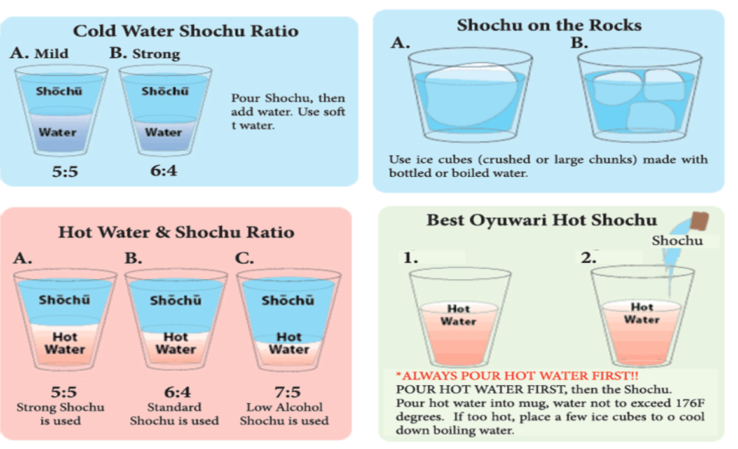
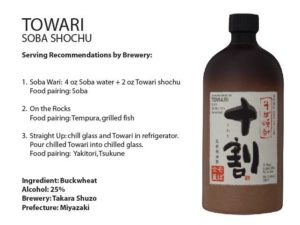
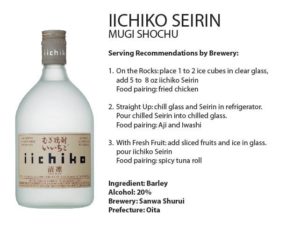
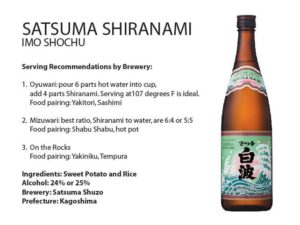
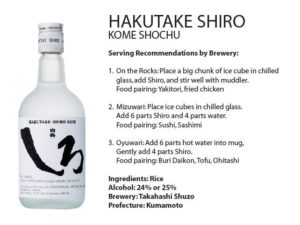
Comments
raymond
Great and informative article! Arigato! May i suggest on your Jyo-Atsu section you make the correction, that the boiling point of water is 212 degrees, not 202 degrees
Sake Admin
You’re absolutely right! Thank you for the heads up Raymond